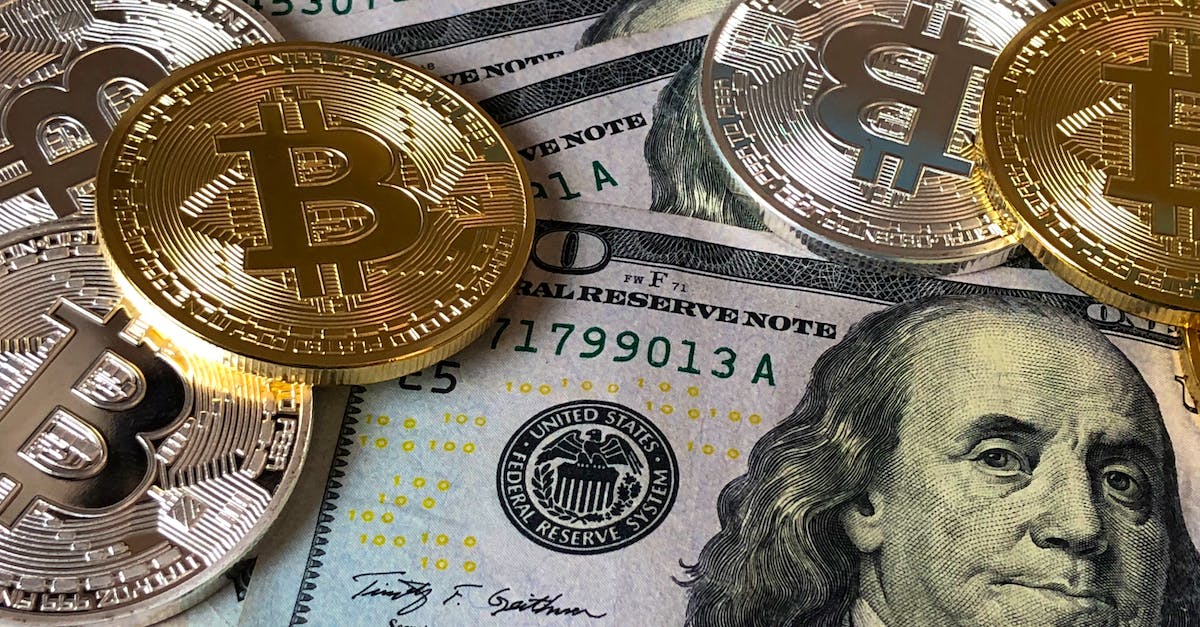Welcome to the 2024 Crypto Investment Trends Guide! In this comprehensive article, we will explore the exciting world of cryptocurrency and provide you with valuable insights into the latest trends shaping the industry. Whether you’re a seasoned investor or just starting out, this guide is designed to help you navigate the ever-changing landscape of crypto investments.
As we enter 2024, the crypto market continues to evolve at a rapid pace. From the rise of decentralized finance (DeFi) to the increasing adoption of non-fungible tokens (NFTs), there are plenty of opportunities and challenges for crypto enthusiasts. In this guide, we will delve into the key trends that are expected to dominate the crypto investment space in the coming year.
Decentralized Finance (DeFi) Revolution
Decentralized Finance (DeFi) has emerged as one of the most significant trends in the cryptocurrency industry. It has revolutionized the traditional financial system by leveraging the power of blockchain technology to provide open and permissionless financial services. As an investor in the crypto space, it’s essential to understand the impact that DeFi is having and the potential opportunities it offers.
What is DeFi?
DeFi refers to a wide range of financial applications built on blockchain networks, primarily on the Ethereum platform. These applications aim to provide traditional financial services like lending, borrowing, trading, and investing in a decentralized manner, without the need for intermediaries such as banks or brokerages. By eliminating intermediaries, DeFi creates a more accessible, inclusive, and transparent financial ecosystem.
Key Features of DeFi
- Decentralization: DeFi applications are built on decentralized networks, ensuring that no single entity has control over the platform. Transactions are validated by a network of computers (nodes) rather than a central authority.
- Smart Contracts: DeFi leverages the power of smart contracts, which are self-executing agreements that automatically enforce the terms of a transaction. Smart contracts ensure transparency and eliminate the need for trust between parties.
- Liquidity Pools: DeFi platforms utilize liquidity pools, where users can contribute their cryptocurrencies to pools that facilitate lending, borrowing, and other financial services. These pools enable efficient and seamless transactions.
- Open and Permissionless: DeFi platforms are open to anyone with an internet connection. There are no restrictions or barriers to entry, allowing users from around the world to access financial services without discrimination.
DeFi Use Cases
DeFi offers a wide range of use cases that are reshaping traditional finance. Some popular DeFi applications include:
- Decentralized Exchanges (DEXs): DEXs enable users to trade cryptocurrencies directly with each other, without the need for a centralized exchange. These exchanges provide enhanced privacy, security, and control over your funds.
- Lending and Borrowing: DeFi lending platforms allow users to lend their cryptocurrencies and earn interest, or borrow funds against their existing holdings. This opens up new opportunities for earning passive income or accessing liquidity without traditional banking institutions.
Exploring Non-Fungible Tokens (NFTs)
Non-Fungible Tokens, or NFTs, have emerged as one of the hottest trends in the cryptocurrency space in recent years. Unlike cryptocurrencies such as Bitcoin or Ethereum, which are fungible and can be exchanged on a like-for-like basis, NFTs represent unique digital assets that cannot be replicated or interchanged. These assets can include digital art, collectibles, virtual real estate, and even digital representations of physical assets.
NFTs have gained popularity due to their ability to provide proof of ownership, scarcity, and authenticity in the digital realm. This has opened up new opportunities for artists, content creators, and collectors to monetize and trade their digital creations. NFTs are typically bought and sold using cryptocurrency, and transactions are recorded on a blockchain, ensuring transparency and immutability.
As an investor, you may be wondering why NFTs have become such a significant trend in the crypto investment space. One key factor is the growing interest from both individual and institutional investors in digital assets. NFTs offer a unique opportunity to invest in digital art and other digital assets, diversifying one’s portfolio beyond traditional investments.
Moreover, NFTs have been attracting significant media attention and celebrity endorsements, which has further fueled their popularity. High-profile NFT sales, such as the digital artwork sold by artist Beeple for a whopping $69 million, have grabbed headlines and showcased the potential for substantial returns on investment in the NFT market.
It’s important to note that, like any investment, the NFT market carries risks. The industry is still relatively new and can be highly volatile. Prices of NFTs can fluctuate dramatically, and there is the potential for scams or counterfeit NFTs to hit the market. Therefore, thorough research and due diligence are essential before making any investments in NFTs.
Nonetheless, with the continued growth of the digital economy and increased acceptance and adoption of blockchain technology, the NFT market is expected to flourish in the coming years. As an investor, it’s important to stay informed about the latest NFT trends, leading platforms, and upcoming launches to make well-informed investment decisions.
In the next section, we will discuss the future prospects of the NFT market and how it is expected to shape the crypto investment landscape in the year 2024.
The Rise of Stablecoins
Stablecoins have emerged as a significant trend in the world of cryptocurrency investments. These digital assets are designed to provide stability by pegging their value to a specific underlying asset, such as a fiat currency like the U.S. dollar or a commodity like gold. The main goal of stablecoins is to minimize the volatility often associated with traditional cryptocurrencies like Bitcoin or Ethereum.
Why are stablecoins gaining popularity?
Stablecoins offer several key advantages that make them appealing to investors:
- Price stability: As the name suggests, stablecoins maintain a stable value, which reduces the risk of sudden price fluctuations. This stability makes stablecoins an attractive option for those who want to hedge against market volatility or use them as a medium of exchange.
- Faster transactions: Compared to traditional banking systems, stablecoins enable quick and efficient transactions. Transferring stablecoins across borders can be faster and more cost-effective than traditional methods.
- Decentralization: Similar to other cryptocurrencies, stablecoins are typically built on blockchain technology, which ensures transparency, security, and decentralization. This decentralized nature eliminates the need for intermediaries and provides users with full control over their digital assets.
- Access to the global market: Stablecoins have the potential to bridge the gap between fiat currencies and the cryptocurrency market. By pegging their value to established currencies, stablecoins allow investors to seamlessly move between traditional financial systems and the world of cryptocurrencies.
Different types of stablecoins
There are several types of stablecoins, each with its unique approach to maintaining price stability. Here are three popular categories:
- Fiat-collateralized stablecoins: These stablecoins are backed by reserves of fiat currency. For example, for every issued stablecoin, there is an equivalent amount of U.S. dollars held in reserve. This approach ensures that the stablecoin’s value remains pegged to the underlying asset.
- Crypto-collateralized stablecoins: Unlike fiat-collateralized stablecoins, these stablecoins are backed by other cryptocurrencies. The value of the stablecoin is secured by a reserve of more volatile cryptocurrencies, with mechanisms in place to maintain the peg.
- Algorithmic stablecoins: This type of stablecoin relies on algorithmic mechanisms to maintain its value. It attempts to stabilize its price through supply and demand dynamics and smart contract protocols.
Conclusion
Investing in Privacy Coins
When it comes to cryptocurrency investments, privacy coins are gaining significant attention. These digital currencies provide users with enhanced privacy and anonymity, making them an attractive option for those who value confidentiality. In the current digital age, where data privacy is a major concern, privacy coins offer a solution for investors looking to safeguard their personal and financial information.
Privacy coins employ advanced cryptographic techniques to ensure the confidentiality of transactions. By implementing features like ring signatures, zero-knowledge proofs, and coin mixing, privacy coins offer users the ability to hide their transaction history and maintain anonymity. This added layer of privacy sets them apart from conventional cryptocurrencies like Bitcoin and Ethereum.
One of the most well-known privacy coins is Monero (XMR), which has gained a strong reputation for its privacy-focused approach. With Monero, all transaction details, including the sender, recipient, and amount, are obfuscated. This makes it virtually impossible to trace or link transactions to specific individuals or addresses.
Investing in privacy coins can offer several potential benefits, including:
- Enhanced privacy: Privacy coins provide users with a higher level of privacy and anonymity compared to other cryptocurrencies. This is particularly appealing for individuals who value their personal information and want to maintain control over their financial transactions.
- Protection against surveillance: Privacy coins offer protection against surveillance and data breaches by ensuring that transaction information remains confidential. This can be especially valuable for individuals in countries with strict financial regulations or for those who wish to prevent their financial activities from being monitored.
- Diversification: Including privacy coins in your investment portfolio can help diversify your holdings. By investing in different types of cryptocurrencies, including privacy coins, you spread out your risk and potentially increase your chances of earning returns.
- Increasing adoption: As concerns over data privacy continue to grow, the demand for privacy-centric solutions like privacy coins is expected to increase. This increased adoption could potentially drive the value of privacy coins higher, resulting in potential investment gains.
However, it’s important to note that investing in privacy coins also carries risks. Regulatory challenges, potential market volatility, and the ongoing debate surrounding privacy coins may impact their long-term viability. As with any investment, it’s crucial to conduct thorough research and assess your risk tolerance before allocating funds to privacy coins.
Introduction of Central Bank Digital Currencies (CBDCs)
Central Bank Digital Currencies (CBDCs) have emerged as a prominent trend in the world of cryptocurrency investments. As the name suggests, CBDCs are digital currencies issued by central banks, representing a digital form of a country’s fiat currency. These digital currencies are built on blockchain or other distributed ledger technologies, combining the benefits of traditional fiat currencies with the efficiency and security of cryptocurrencies.
CBDCs aim to enhance the efficiency, security, and traceability of financial transactions, as well as foster financial inclusion and promote innovation in the financial sector. They offer several advantages over traditional currency, such as faster and cheaper transactions, increased transparency, and reduced reliance on intermediaries.
Some key points about CBDCs include:
- CBDCs are backed by the issuing central bank, which ensures trust and stability.
- They operate within a centralized framework, allowing the central bank to maintain control over the monetary policy and financial stability.
- CBDCs can be used for various purposes, including retail transactions, interbank settlements, cross-border remittances, and government payments.
- By digitizing the currency, CBDCs can reduce the costs associated with printing physical money and increase the efficiency of distributing funds during times of crisis.
- CBDCs provide an opportunity for central banks to have greater visibility and control over the financial system, combat illicit activities, and prevent money laundering and fraud.
The rise of CBDCs has the potential to transform the global financial landscape, as many countries are actively exploring the concept and conducting research and pilot projects. The People’s Bank of China has been at the forefront of CBDC development, with its digital yuan already being tested in several regions.
While CBDCs offer exciting prospects for the future of financial transactions, there are still challenges that need to be addressed, such as privacy concerns, cybersecurity risks, and the potential impact on monetary policy. It’s important for investors to stay informed about the development of CBDCs and assess their potential implications on the cryptocurrency market.
In the next section, we will explore the growing interest in decentralized finance (DeFi) and its impact on the investment landscape.
Conclusion
As you can see, the world of cryptocurrency investments is constantly evolving, and it’s important to stay informed about the latest trends. In this article, we discussed the rise of stablecoins and privacy coins, which offer unique advantages and opportunities for investors. We also explored the concept of Central Bank Digital Currencies (CBDCs) and their potential to revolutionize traditional currency systems.
While CBDCs present exciting possibilities for enhancing financial transactions, it’s crucial to address challenges such as privacy concerns and cybersecurity risks. As more countries actively explore the development of CBDCs, it will be interesting to see how these challenges are overcome.
Finally, we touched upon the growing interest in decentralized finance (DeFi) and its impact on the investment landscape. DeFi has the potential to disrupt traditional financial systems and provide new avenues for investment opportunities.
The world of cryptocurrency investments is dynamic and ever-changing. By staying informed about the latest trends and developments, you can position yourself for success in the exciting world of crypto investments.
Frequently Asked Questions
Q: What are stablecoins and privacy coins?
Stablecoins are cryptocurrencies designed to minimize price volatility by pegging their value to a stable asset, such as a traditional currency or a commodity. Privacy coins, on the other hand, offer enhanced privacy and anonymity features to users by obfuscating transaction details.
Q: What are Central Bank Digital Currencies (CBDCs)?
Central Bank Digital Currencies (CBDCs) are digital forms of a country’s currency issued and governed by the central bank. Unlike cryptocurrencies, CBDCs are centralized and aim to provide the benefits of digital currencies while maintaining control by the central authority.
Q: What advantages do CBDCs offer over traditional currency?
CBDCs offer several advantages over traditional currency, such as increased efficiency, transparency, and traceability of financial transactions. They also enhance financial inclusion by providing access to banking services for the unbanked population. Additionally, CBDCs can streamline cross-border transactions and reduce costs.
Q: What challenges do CBDCs face?
CBDCs face challenges related to privacy concerns, as the traceability of transactions raises questions about the confidentiality of personal financial information. Additionally, cybersecurity risks need to be addressed to ensure the security of digital transactions and prevent potential hacking or fraud attempts.
Q: What is decentralized finance (DeFi)?
Decentralized finance (DeFi) refers to a system that aims to recreate and improve traditional financial services using blockchain technology. DeFi eliminates intermediaries and enables users to engage in various financial activities, such as lending, borrowing, and trading, without the need for traditional financial institutions.
Q: What impact does DeFi have on the investment landscape?
DeFi has a significant impact on the investment landscape by providing more accessible and inclusive investment opportunities. It allows individuals to participate in activities such as yield farming, liquidity provision, and staking, potentially earning higher returns compared to traditional investment options. However, it also carries risks due to the relatively new and rapidly evolving nature of the DeFi ecosystem.






